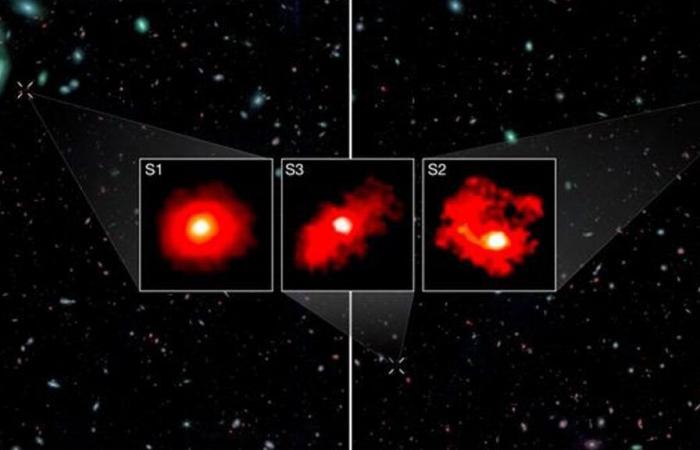While probing the early Universe, the James Webb Space Telescope spotted a trio of gigantic “red monsters”, whose rapid growth can hardly be explained by our current models.
A surprisingly sustained stellar formation
Detected by the NIRCam instrument of James-Webbmaking it possible to image in the near infrared regions of the cosmos masked by interstellar dust, these three galaxies are distinguished by their age and size. Having formed more than 12.8 billion years ago (about a billion after the Big Bang), they appear to be almost as massive as the Milky Way.
According to the new study, published in the journal Naturethey indicate surprisingly sustained early star formation. “ Many processes related to the evolution of galaxies tend to limit the efficiency with which gas is converted into stars », souligne Stijn Wuyts, the University of Bath. « It seems these red monsters have avoided most of these pitfalls. »
Galaxies are generally considered to form inside gigantic pockets of dark matter, whose powerful gravitational pull leads to the accumulation of ordinary matter, which ultimately gives rise to stars. While barely 20% of the aspirated gases usually contribute to the star formation process, 80% would have been “converted » in the case of the three “red monsters”.
New observations planned
For the team, the next steps will be to make new observations of these red monsters using Webb and the Atacama Large Millimeter Array (ALMA), Chile’s powerful telescope. These will aim to establish the unique processes responsible for their remarkably rapid growth, which our models could take into account.
« These galaxies represent the start of a new era in the exploration of the early Universe », Estimates Mengyuan Xiao, from the University of Geneva. “ Their study will help shed light on the conditions that reigned there. »
James-Webb’s latest discoveries include a star-forming galaxy from the inside and out and an intriguing vapor world.






